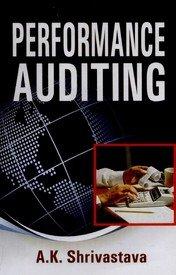Question
Match each term to its correct description Theft Act Investigations Surveillance Vulnerability Chart Invigilation Computer forensics Cyclic redundancy check number Concealment Investigative Methods Theft Investigative
-
Match each term to its correct description
Theft Act Investigations
Surveillance
Vulnerability Chart
Invigilation
Computer forensics
Cyclic redundancy check number
Concealment Investigative Methods
Theft Investigative Methods
Conversion Investigative Methods
Inquiry Investigative Methods
A. The gather of electronic evidence.
B. Searching public records, online resources, the net worth method
C. a theft act investigative technique that involves close supervision of suspects during an examination period.
D. Document examination, audits, electronic searches, physical asset counts
E. Also called observation, it involves watching and recording the physical facts, acts, and movements, which are part of the theft act of a fraud.
F. a calculation based on the contents of a disk or file.
G. a tool that explicitly considers all aspects of the fraud.
H. Surveillance and covert operations, invigilating, seizing and searching computers, physical evidence.
I. Interviews and interrogation, honesty testing
J. activities that directly investigate the fraud act.
QUESTION 2
-
Match each term to its correct description
Chain of Custody
Bates Numbers
Link Analysis
Discovery Sampling
Sampling Risk
Nonsampling Risk
Subpoenas
Document Examination
Document Experts
A. allows an auditor to generalize and make inferences from the sample to the population.
B. a record must be kept of when a document is received and what has happened to it since its receipt.
C. Risk that a sample is not representative of the population.
D. A specialized form of investigation that applies forensic chemistry, microscopy, light, and photography in making determinations about documents.
E. orders issued by a court of a grand jury to produce documents.
F. The process of linking people, documents, and events in a case. Link analysis is often performed by automated software that helps coordinate large cases.
G. can determine whether a document was written by the person whose signature it bears, has been forged, or has been altered by additions, deletions, obliterations, erasures, or photocopying.
H. used by attorneys involved in litigation to track all documents.
I. The risk that a finding will be misrepresented.
QUESTION 3
-
Match each term to its correct description.
Interview
National Crime Information Center
Interstate identification index
Postal Inspectors
Trashing
Gramm-Leach-Bliley Act
Opting Out
Net worth method
A. Federal investigators who can handle major fraud cases involving the use of mail; they work for the prosecution of offenders who violate postal laws.
B. Analytical method that estimates a suspect's unexplained income.
C. The process of looking through a person's trash for possible evidence.
D. Information on stolen vehicles, license plates, securities, boats, and planes; stolen and missing firearms; missing persons; and individuals whoa re wanted on outstanding warrants.
E. Protects against the use of false pretenses. It made it more difficult for officials and private citizens to access information from financial institutions.
F. Not providing written notice to the bank denying the bank the right to sell their personal bank information.
G. Retains arrest and criminal records on a nationwise basis
H. A question and answer session designed to elicit information
QUESTION 4
-
Match each term to its correct description
Reaction to Crises
Question Typology
Elements of Conversation
Inhibitors of Communication
Facilitators of Communication
Mechanics of the Interview
Honesty Testing
A. Pencil-and Paper Test, Graphology, Voice Stress Analysis and Polygraphs
B. Expression, Persuasion, Therapy, Ritual, Information Exchange
C. Introductory Questions, Informational Questions, Assessment Questions, Closing Questions, Admission-Seeking Questions
D. Introductory Questions, Methodology, Informational Questions, Question Sequence, Informational Question Techniques, Note-Taking, Observing Respondent Reactions, Theme Development, Transition Methodology, Dealing with Resistance, Difficult People, Volatile Interviews, Assessment Questions, Detecting Deception, Methodology of Assessment Questions, Admission-Seeking Questions, Physical Evidence.
E. Fulfilling Expectations, Recognition, Altruistic Appeals, Sympathetic Understanding, New Experience, atharsis, NEed for Meaning, Extrinsic Rewards.
F. Denial, Anger, Rationalization, Depression, Acceptance.
G. Competing Demands for Time, Threatened Egos, Etiquette, Trauma, Forgetting, Chronological Confusion, Inferential Confusion, Unconscious Behavior
Step by Step Solution
There are 3 Steps involved in it
Step: 1

Get Instant Access to Expert-Tailored Solutions
See step-by-step solutions with expert insights and AI powered tools for academic success
Step: 2

Step: 3

Ace Your Homework with AI
Get the answers you need in no time with our AI-driven, step-by-step assistance
Get Started


